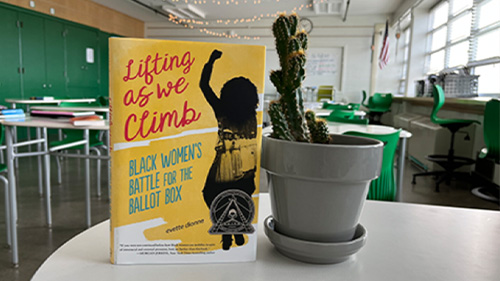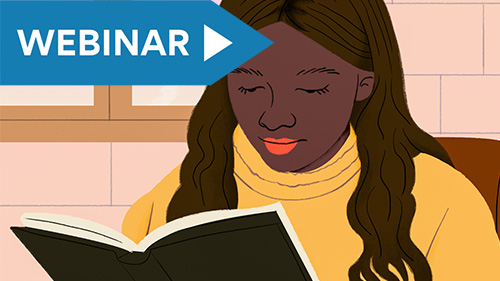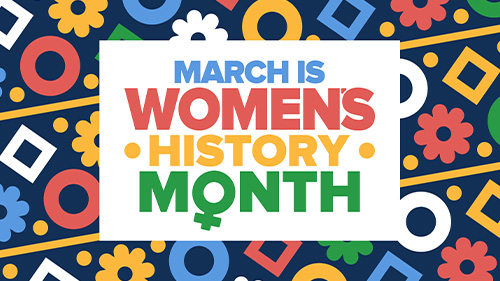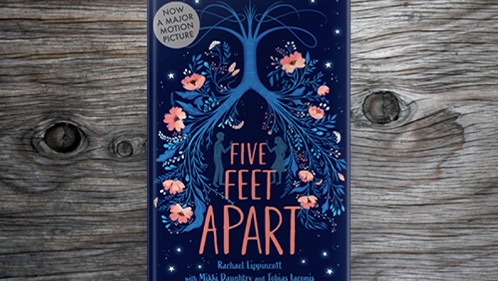Women's History Month: Powerful Women
If we all trace our lineage back generation by generation, you will almost always find a fearless woman at the forefront of care, kindness, and the...
AP & Honors Mathematics
Explore Wiley titles to support both AP and Honors mathematics instruction.
Literacy Skills & Intensive Reading
Connections: Reading – Grades 6–12
Empower student success with a proven intensive reading program that develops strong reading skills in striving readers.
Drama, Speech & Debate
Basic Drama Projects 10th Edition
Build students’ confidence and competence with comprehensive, project-based theatre instruction.
Literature
Connections: Literature
Support learners as they study dynamic, relevant texts and bring the richness of diverse voices to students through literature.
Literature & Thought
Develop critical thinking, reading, and writing across literacy themes, genres, historical eras, and current events.
Language Arts
Vocabu-Lit® – Grades 6–12
Help students build word power using high-quality contemporary and classic literature, nonfiction, essays, and more.
Connections: Writing & Language
Help students develop grammar, usage, mechanics, vocabulary, spelling, and writing and editing skills.
Reading/English Language Arts
Measuring Up to the English Language Arts Standards
Incorporate standards-driven teaching strategies to complement your ELA curriculum.
English Language Learners
Measuring Up for English Language Learners
Incorporate research-based best practices for ELLs with an approach that includes a focus on language acquisition strategies.
Mathematics
Measuring Up to the Mathematics Standards
Incorporate standards-driven teaching strategies to complement your mathematics curriculum.
Foundations
Measuring Up Foundations
Help students master foundational math skills that are critical for students to find academic success.
Science
Measuring Up to the Next Generation Science Standards
Give students comprehensive NGSS coverage while targeting instruction and providing rigorous standards practice.
Assessment
Measuring Up Live
Deliver innovative assessment and practice technology designed to offer data-driven instructional support.
For a better website experience, please confirm you are in:

In Kimberly Brubaker Bradley’s Fighting Words, 10-year-old protagonist Della gives readers a front row seat to her daily life in foster care with her 16-year-old sister Suki who has been her main caregiver since she was born. Their life hasn’t been easy—with their birth mother far away, incarcerated for drugs, and a series of traumatic experiences with their guardian.
Suki is Della’s forever protector—but she’s under a lot of pressure, so during a decline in her mental health, Suki tries to end her life. When this happens, Della tries to become Suki’s protector, but she soon realizes that kids aren’t supposed to be “fixing” other kids—that’s what parents should be for. When their social worker visits, she constantly asks the sisters for their goals for the future, but Della and Suki have never been able to dream because they’ve been in survival mode since birth.
During Women’s History Month, so many famous people get recognized, especially adults. This story reminds readers that it’s not always women who do incredibly hard and challenging things, but also the youth who fight every day to become someone, and who deserve a chance for happiness and success. Della shares her story, learning more and more of Suki’s along the way.
Later in the book, Suki comes home with a semicolon (;) tattoo to represent a pause to remind her that like in a sentence, or in life, you sometimes have to pause and then continue going to find your way and let yourself heal. Della ends up getting an ampersand (&) tattoo after, and so does Suki to symbolize their forever connection. Della & Suki.
Next day, Suki came home with a tattoo.
It was on the same wrist she cut, right beside her scar. It was a semicolon, a piece of punctuation that looks like this: ;
“You use semicolons when you don’t want to use a period,” Suki said. Her eyes were sparkling. “This is to remind myself. My sentence—my story—it’s going to keep going on.”
Okay, that was cool.
“You wanted me to do more,” she said. “To make promises. Here it is. The best promise I can make right now. Anytime I look at my wrist, I won’t just see what I almost did. I’ll see what I’m about to do—keep going.” (226–227)
Mini Lesson:

Jennifer Epping is a high school English and journalism teacher in Des Moines, Iowa. She has a passion for reading, writing, and making lame jokes to her students just to see them laugh or roll their eyes. She just concluded her ninth year teaching. Epping graduated from Iowa State University with a BS in journalism and mass communication (2010) and BA in English Education (2013). She attended New York University’s Summer Publishing Institute (2010), and spent some time in children’s book publishing in New York.

If we all trace our lineage back generation by generation, you will almost always find a fearless woman at the forefront of care, kindness, and the...

The main character in The Girl with the Louding Voice by Abi Daré, Adunni, is on a personal journey to give herself the best life she can despite...

Join us for a conversation in partnership with Simon & Schuster with women YA and children's authors about the experience of being a woman in the...

In recent months, the Taliban in the Middle East has taken over once again after American troops removed themselves. The first person I thought of...

My favorite thing about Lifting As We Climb: Black Women’s Battle for the Ballot Boxby Evette Dionne is that it’s accurate, and the author highlights...

Join us for a conversation in honor of Women's History Month in partnership with Simon & Schuster with authors Alicia D. Williams, Priyanka Taslim,...

March is Women's History Month, and this year Perfection Learning® is celebrating by highlighting stories that feature strong women. Strength is...

Dynamic and flat characterization has been in language arts and English curricula forever, it seems. How do we up the rigor as students advance in...

In celebration of Women's History Month, explore this lesson with your students that gives them the opportunity to practice an important part of the...

For most of the past year and half, I have spent most of my waking hours querying or obsessing over querying literary agents for my young adult novel

It’s not very often that TV shows or movies come before the book version, but it does happen sometimes! The art of writing is alive in visual media...

Students' favorite streaming services, movies, and video games are all packed with compelling storytelling. To get them more excited about reading, I...
